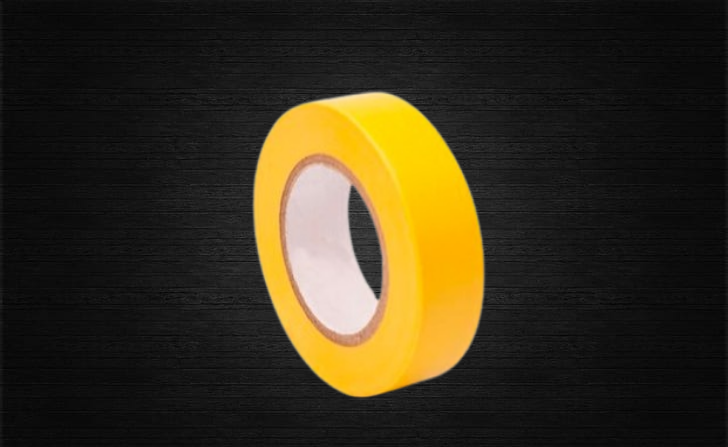Upvote for Type-F
The superior plug design
What makes it better over a type e? Personally i prefer type e, i dont trust the springs of type f :')
You can rotate F 180 degrees and plug it in.
What about polarity, I’m actually curious about that
It’s AC. Polarity doesn’t generally matter.
Bridge rectifiers are also not polarized to convert AC to DC.
In terms of physics, AC doesn’t have polarities. Treat both the live and the neutral wire as if it were live. You don’t know what kind of psychopath wired the building.
You can plug it in upside down?
Thats a fair argument that people have had issues with actually! Sometimes that is annoying but ive never had to much issues with it tbh
What’s great is that it’s also “backwards-compatible” with type E. Male type E plugs will usually also have ground connections for a type F, so you can plug it into female E and F sockets.
Edit: In fact, looking back at the picture, that’s exactly the kind of male plug shown for both type E and F. It works with both types. It has the hole for an earth prong, but it also has a contact on the bottom side if you look closely.
I will say the comparability is amazing and a really good thing! The type f plugs are amazing. Nothing bad about more ground connections!
Just wished the type f sockets had a solid piece of metal, instead of the springs. Then they’d be perfect! :D
Type F plugs also works with the type E sockets. Superior.
Nearly, that’s the type G
BS. Type F/Schuko is the USB-C of power sockets/plugs.
No fuse, no way
Why would I want a whole circuit to be cut because of a single device fault, and then have to spend time figuring out which device on that circuit actually has the fault.
Plus if a device only needs 3A it shouldn’t be able to draw more
Why would I want a whole circuit to be cut because of a single device fault
Dunno, if I have a fault in my home, I want it to be spectacular.
A couple of years ago I literally had massive blood pressure and walked like 2 km to go buy a box of fuses.
Burning two fuses, I figured out one of the extension strips was bad.
If I plug something in and half of my apartment goes black, TWICE, and needs a fuse replacement each time, maybe that thing needs to be tossed anuway. I’m no electrician, I can’t troubleshoot a power strip. It has served its years. Bye.
and then have to spend time figuring out which device on that circuit actually has the fault.
Usually that happens just when you plug it in so…
Type G only exists because the British skimped on wiring after WW2 and needed to put a fuse in each plug for safety, hence the chonkiness.
Can’t rotate type G 180°. And since type F sockets are recessed, it’s just as unlikely to get shocked as with type G. Ground even connects first. And it’s directly compatible with type C and most type E plugs (since E&F usually share the same plug design, just the socket is a little different). What advantage would type G have to F?
The fuse: https://lemmy.world/comment/10644612
That’s neat. I can remember maybe one or two instances in my life, where that could have been useful. The rest of the time, I much prefer smaller plugs that I can plug in upside down and a home electrical network with good wiring.
Go watch any video comparing plugs and I bet the majority say Type G. It has so many safety features it’s unreal.
Which are only necessary because British houses are wired with a ring main. It’s a false economy.
Also, when it was created, most appliances were earthed. Nowadays, most things one plugs in are small electronic devices which don’t need an earth. Type G/BS1363 has no 2-pin variant, and even mandates a mechanical shutter to prevent a plug without an earth pin from being used. Which was great in 1947, but not so much now, when Europeans, Americans, Japanese, Australians and such have slender 2-pin plugs and economical sockets to put them in, while the Brits/Irish/HK/UAE are stuck with their enormous clownshoe of a plug.
I would have thought two pin plugs are easily to break. I’ve not broken a British plug in 40 years of life.
Anyway I’m not trying to debate this. There are plenty of resources online where electricians discuss the different plug types and the order is typically UK, Germany, and Australia.
What I’d like to see is apples-to-apples comparison of home and office safety between the different plug types. The data is sorta out there, but it’s not normalized in a way that’s convenient for comparison between countries.
On paper, yes, the North American plug is pretty bad, but will that show up in actual practice? There may be a case for changing it, but that needs a comprehensive study before going to all the effort to transition to a better design. Even if we had that study right in front of us, I can already hear conservatives complaining about Marxists electrical plugs.
That plug is only useful for a device that pays respects and nothing else.
The last one is a typo.
Type K looks the happiest.
Welcome to Denmark.
It’s the hygge plug
:D
B’s one raised eyebrow is skeptical of this.

The plug design from my country looks elegant and rational, all the rest are koo-koo-krazy-town.
– everyone
Why would they invented a plugs that’s not grounded? (Type A and C)
I fucking hate it because my country’s default plugs is type C. Caused me so much trouble in damaged electronics, shocked, and the effort to make a grounded line for each individual electronics myself.
the non grounded plugs are usually only used on double isolated devices, like your phone charger.
double isolated basically means all the outputs are only referenced to each other and not to ground, so you won’t get a shock by touching a usb plug, where you absolutely would if you touched live wire, where the reference is earth
my pc case shocked me when I touched it, not a huge shock like live wires but enough for you to feel a little pain (like static shock on winter day). My phone charger also shocked me the same way when i touched the metal part of the USB head.
yea PC power supplies do need the earth pin, but i’m surprised the usb also shocked you, maybe a faulty adapter?
It’s a $80 GAN charger from Ugreen and the C-to-C cable that came with my iPhone.
I would be a big sad chump if it’s a faulty brick. But thanks, I’ll find a way to troubleshoot that.
If it shocked you, it’s faulty
deleted by creator
Remember, all this stuff started over a century ago. The main application was electric incandescent lights, which are fine to run with only two wires.
Type c is commonly used in my country for small appliances as it can be used with type E and F plugs which are used everywhere
Finland uses C and F, where F is for grounded and C is for laptop chargers and such that don’t need grounding.
devices with double insulation don’t need a ground connection
Does Finland use C outlets, though?
At least in the US, just about every outlet has a ground port (Type B), even if the device you’re plugging in has only a 2-prong plug. I’ve only seen the Type A outlet in one really old building.
Lots of old houses in the US still have a bunch of the Type A outlet. My first apartment did for most outlets.
Now, what’s really fun is Knob and Tube wiring, where the hot and neutral lines are separate wires. Which means they tended to be run in separate directions if it was convenient for the asshole from a century ago to run it that way.
Your neutral should be bonded to ground anyway. If you have current on the neutral that needs the ground path, something is wrong.
That really depends on the network. The only connection between PE and N might be at the power station (TN-S) or there might be no wire at all (TT).
All the house I wired had neutral bonded to ground wire at the panel.
Sounds like TN-C-S. There’s a gazillion tradeoffs between those things, above my paygrade, and TBH above the paygrade of many many many electricians unless they happen to be network techs.
Hi, so should I just grounded the neutral wire from the fuse box (the one that goes from the pole into the house) instead of running a ground wire to each devices?
The best practice is a separate ground wire. But there’s plenty of houses without them.
A is much less of a pain than C. At least in most cases the plug pinches into the outlet and stays in place.
I’ve used C while traveling for my charger and The weight of a few cords wants to drag that fucker out every time.
Also worth noting that A can come in the polarized (one plug slightly larger, fits one way) or non-polarised (doesn’t matter) variety.
Why would they invented a plugs that’s not grounded?
Because the importance of grounding was something we figured out after those plugs were invented?
Thankfully Tom Scott can tell us which one is best:
Tom’s got every right to be proud for the British plug. It’s super over engineered and a love it.
…until you step on one due to its flat back and split your head open on a coffee table.
They are worse than Lego on the floor.
deleted by creator
People in the continental Europe: “Fine. We concede the British plug is a Truly Worthy Adversary to the one true plug, Schuko (Type F).”
I like when I go to some hotels and they have “international sockets” - basically the bastard child of all these sockets.
Also called a fire and electrocution hazard.
Type G right? Those are our counties plugs and every time I’ve watched videos people love all the safety features.
Indeed!
Can I point out the UK BS1363 (type G) plug is the only one you can use to open a bottle of beer.
I’m not sure what that says about the UK.
German here. I’m absolutely positive I could open a beer with any of those plugs. And half of the sockets.
A fair point, but ours is practically a bottle opener. A lot easier after a few previous bottles.

The Chad Type-G.
Not the kind of plug I was hoping for
It’s pretty much the same thing for butt plugs and drug dealers
But why male models?
What we really need is a USB-C-style reversible plug with data and variable voltage where neutral and phase never reverse and earth is always there.
Lacking that, I vote for Type N because it’s small, polarised, and the pins are halfway-insulated. I don’t like that the frame is symmetrical, so in the dark, the only way to tell which way to plug in is to feel the pins and the holes, same as USB-A. I reject all that hurt to step on.
There’s a smaller version of type F that has the same frame as type N, just missing the middle pin, so it is reversible. It has the same risk of reversing neutral and phase as type F, but (while I’m no expert) that has never been a problem for me.
C7/C8 plug it’s called irc
Type F is also called CEE 7/3 (the socket) and CEE 7/4 (the Plug). Is that what you mean?
I was referring to something like this
Ah, got it. Misunderstanding on my part.
For what it’s worth I think the comment above ours meant this kinda plug: https://en.m.wikipedia.org/wiki/Europlug
I agree on having earth on sockets, but why do you need a earth pin on plugs if it’s not going to be used
That’s just USB-C with a USB PD controller. Can go up to 48V.
Type B seen some shit, and it is probably Type-I’s fault. Regardless, I want whatever life strategy Type-K’s figured out.
I wish the entire world would use type G. It’s the objectively superior socket for so many reasons. I hate type B so much
Schuko (type F) is better than the UK plug. UK plug is huge, and schuko has same safety features, except the fuse, which is not needed if your houses would be build better.
Local fusing provides notable advantages, even without ring finals. In particular, one failed appliance doesn’t necessarily take out the whole circuit, and lower draw appliances can be more closely fused (e.g. 3A) reducing available fault energy.
It’s not worth the trade off of the giant plug in my opinion. And local fusing doesn’t really protect the user directly, it protects the wires. Modern codes in Europe put the equivalent of GFCIs on all circuits which can actually save lives.
GFCI will save people from direct shock , but won’t always stop a fault from say starting a fire. Example a damaged wire arcing the live and neutral (not a dead short) won’t trip gfci, there is no ground fault because the power is returning over the neutral as it should. And since it’s just a partial arc short it’s not going to draw enough to trip the main breaker so it can just sit there and get hot and catch fire.
Technically we now have AFCI to try and detect exactly that, but it’s still relatively recent and generally very expensive to implement.
All that said, I prefer the g-type outlet simply because of the giant plug ensures a nice, proper, secure connection, and isn’t shaped in a way that lends itself to being particularly damaged. Even if something lands on it, it’s profile prevents it from being ripped out of the socket. Whereas the other socket types tend to stick out quite far from their socket and have a tendency towards being yanked out of it. Obviously I’m partially overreacting because I’m dealing with the absolutely fucking garbage type B Outlet I just want an outlet that will finally stay secure
This is why both (fuse+GFCI) are put to the line and located in the electrical cabinet.
Still not nearly as safe. Leaving it up to the home owner to replace the fuse/breaker for each circuit each time a device of a different amp requirement is used is very… naive? The manufacturer of the device shipping the item with the fuse that matches requirement is easier and safer. It may have been born from the ring mains requirement but it’s much safer because of it.
Those fuses that can be changed by home owner themself have not existed in 20 years, all are automatic that you just flip from the panel. Fuse size is calculated based on the width of the cable, so if current gets too high the fuse just flips, so the cable doesn’t melt.
Edit: as a counter part, if you plug multiple high usage components on same cable, the individual device/plug fuse does not blow, but the cable can melt inside the wall.
IIRC, the UK actually teaches kids how to wire plugs properly in school for that very reason. Or at least they used to.
To add, we upgraded our house from 100A to 200A service a little while ago, and one of the companies quoted an AFCI box. Was something like $15k, compared to like $3k for a much simpler setup (which left our existing 100A box as a subpanel instead of moving everything).
Also, I run 3D printers, and apparently those tend to trip AFCI.
What’s wrong with a large plug? Surely it’s better for people with mobility difficulties in their hands, like arthritis.
I’d argue the recessed nature of a type F socket and the guides on the sides are much better suited for aiding those people.
That is why many devices have built-in fuses.
Built in fuses protect only downstream of where the fuse is. The supply flex is therefore not protected, despite often being the most damaged part.
It’s absolutely overkill for many applications, with its integrated fuse, and that’s why I love it. It is indeed objectively best.
deleted by creator
Rest of Europe doesn’t like or use type G. It is bulky, can be used as a weapon, can only be plugged one way and compensates for shitty wiring that no one else needs or wants.
Why are there so many that lay flat with prongs up???
Because when it’s plugged in (as it usually is) it lays closer to the wall and needs less clearance.
Oh! That actually makes a ton of sense lol
oh that? that is so you can learn a lesson














